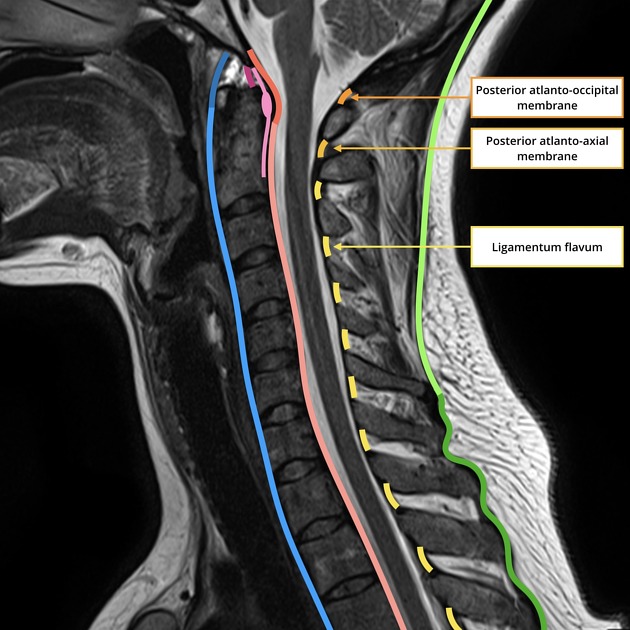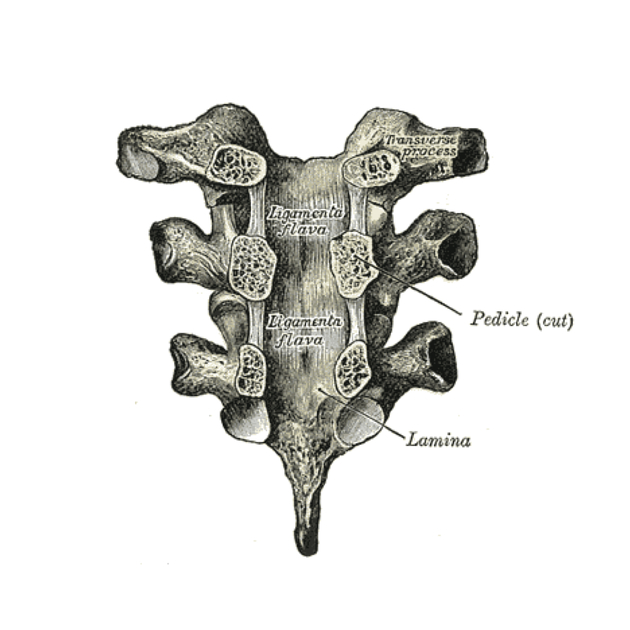The ligamenta flava (singular: ligamentum flavum) are paired ligaments which run between adjacent laminae of the vertebral bodies and are present from C2/3 to the sacrum. Above the C2/3 level, the equivalent structures are known as the posterior atlanto-occipital membrane between the skull base and C1 and between C1 and C2 may be known as the posterior atlanto-axial membrane. The ligamenta flava form part of the posterior ligamentous complex of the vertebral column.
On this page:
Gross anatomy
paired, yellowish, elastic ligament
forms part of the posterior border of the spinal canal
relatively thin in the cervical spine, progressively becoming thickest in the lumbar spine
broad base along the lamina from the facet joints to base of the spinous process
attaches from the front of the upper lamina to the back of the lower lamina
in the lumbar region, it runs laterally, covering the anterior aspect of the facet joints.
Relations
anterolateral: intervertebral foramen and contents (spinal nerve roots, segmental arteries, recurrent meningeal nerves, communicating veins between internal and external venous plexus)
anteromedial: spinal cord and meninges
posterolateral: lamina and facet joints
posteromedial: spinous process, interspinous ligament, venous connection between internal and external vertebral venous plexuses
Innervation
superficial: medial branch of dorsal roots of spinal nerves
deep: sinuvertebral nerves (recurrent meningeal nerves)
History and etymology
Flavum is Latin for yellow, referring to the color of the ligament.








 Unable to process the form. Check for errors and try again.
Unable to process the form. Check for errors and try again.